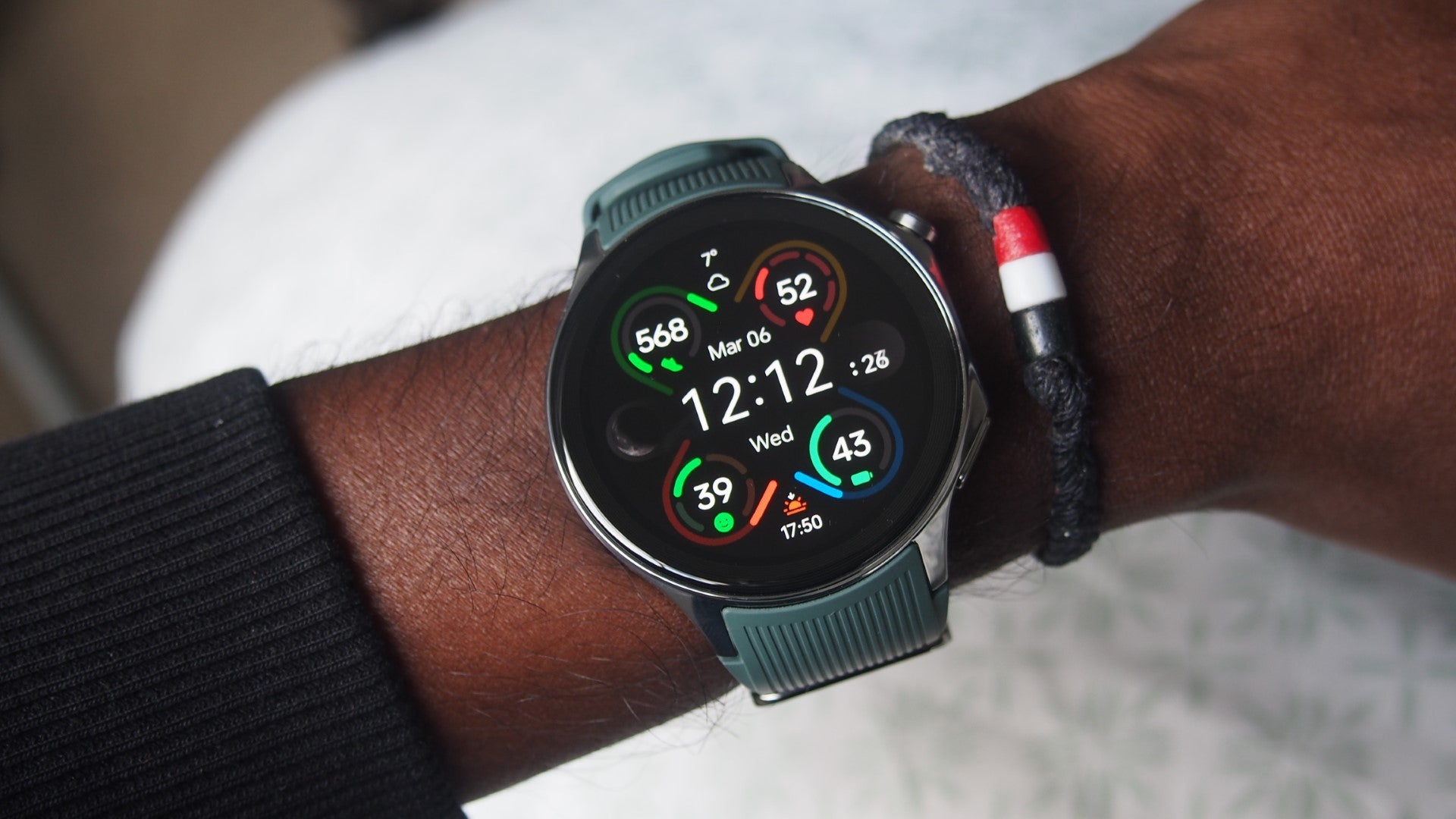Fitbit Charge 6 Review
The go-to fitness tracker

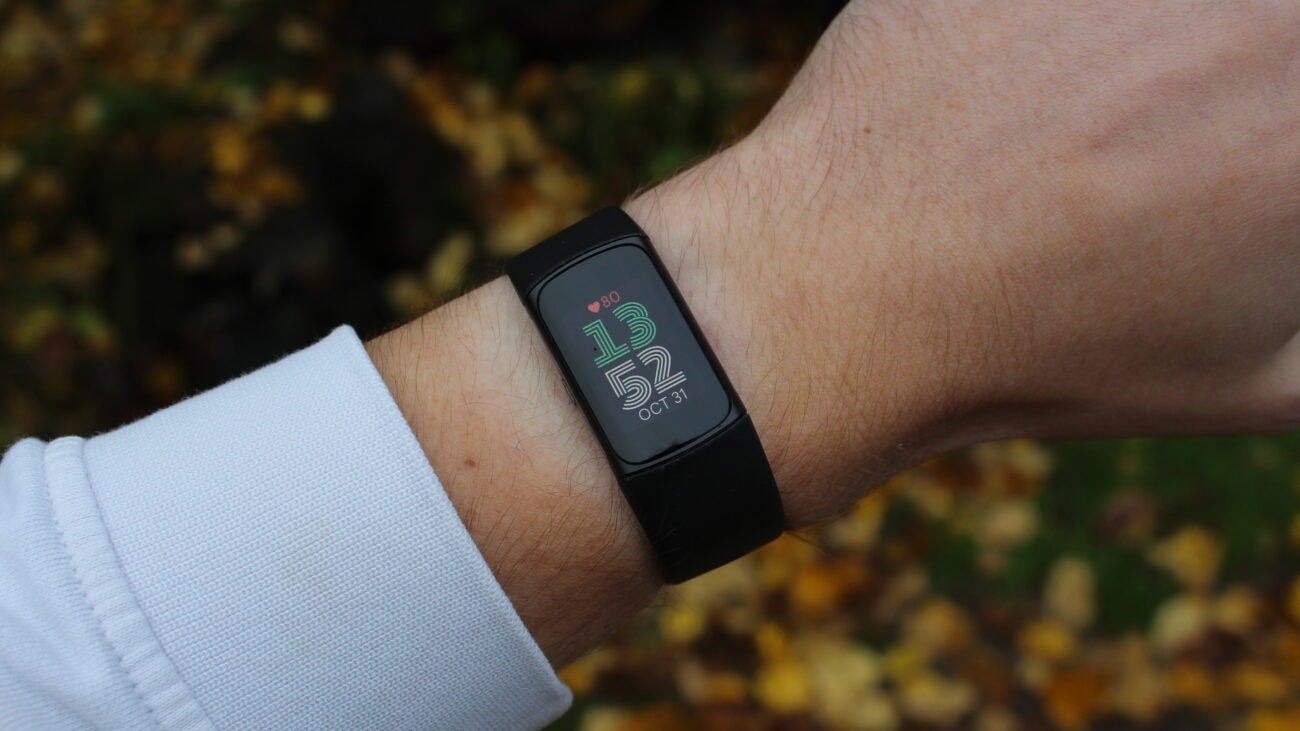
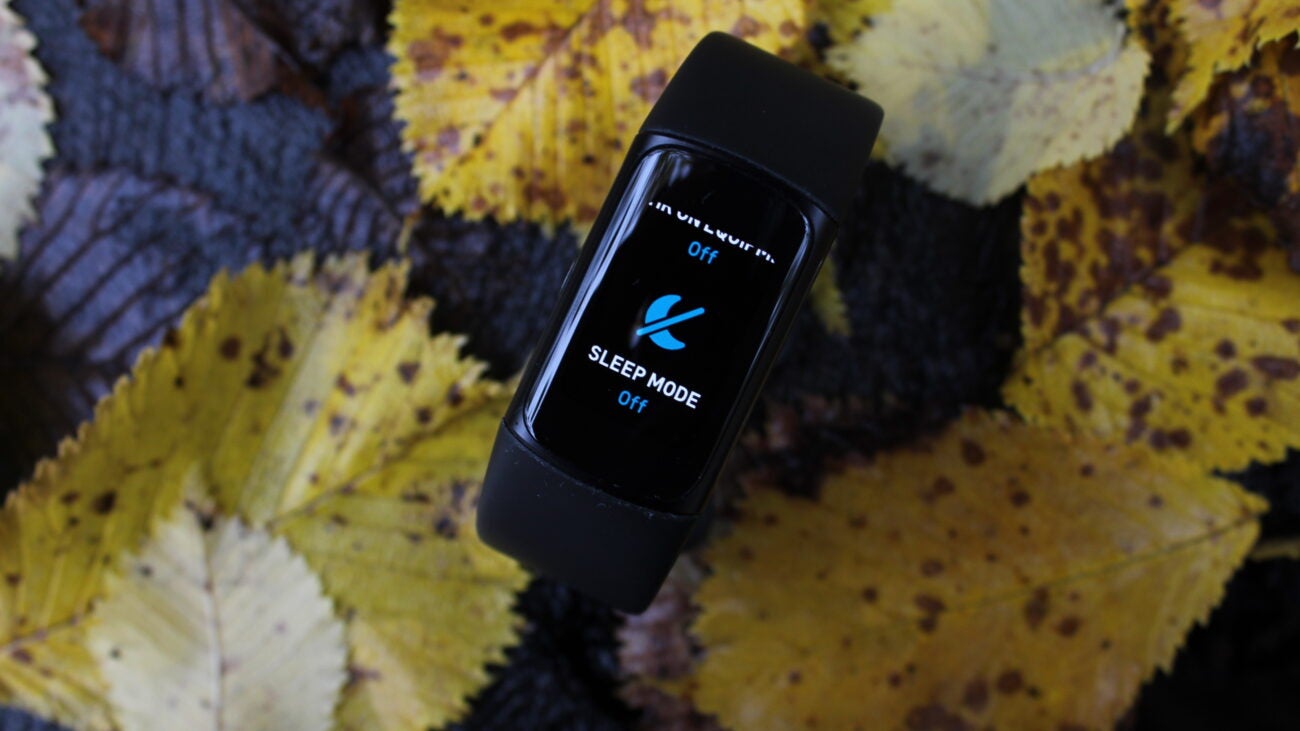

Verdict
The Fitbit Charge 6 is the go-to fitness tracker for those who want accurate daily tracking, rock-solid sleep monitoring, and advanced health features for a reasonable price, with Google integrations making the proposition more attractive than ever. It’s by no means a reliable device when it comes to GPS or heart rate tracking, and some insights are for Premium subscribers only, but Fitbit is still well clear of the competition here.
Pros
- Improved design with side button return
- Google services are welcome additions
- Sleep and health tracking both shine
Cons
- GPS performance is very poor
- Sports tracking is basic
- Some features locked behind Fitbit Premium
Key Features
- Google integrationsWallet, Maps, and YouTube Music are all available
- Very familiar designOnly the side button has changed from Charge 5
- New AI-based heart algorithmsHeart rate accuracy should be improved compared to previous model
Introduction
The glory days of Fitbit’s Charge lineup may be long gone, but it undoubtedly remains a top option for those in the market for a premium fitness tracker – and the company has added some enticing features for the Charge 6.
It marks the first time we’ve seen true integration of services from Google into a Fitbit tracker, while the company also suggests that heart rate performance should be considerably boosted – just like we saw promised (and delivered) with the Google Pixel Watch 2.
Yet, this is still only a mild refresh from the Charge 5 that was released two years ago. The design remains largely the same, as do most of the features.
With so few well-stocked and reliable fitness trackers around in 2023, Fitbit remains clear – but does the Charge 6 do enough to force an upgrade or tempt smartwatch fans? Let’s explore.
Design and screen
- 1.04-inch AMOLED display remains
- Welcome return of the side button
- Waterproof up to 50m
To look at the Fitbit Charge 6 alongside its predecessor, you’d be forgiven for failing to spot the difference between the two. As I say, the design has remained similar here.
There is one crucial difference, though – the return of the side button. Fitbit did away with the haptic pusher when it redesigned the band in 2021, and it meant day-to-day interaction just wasn’t quite as snappy or enjoyable.
The move back to the button ensures that going back in menus, opening up Google Wallet, or simply waking the device is now much more pleasant.
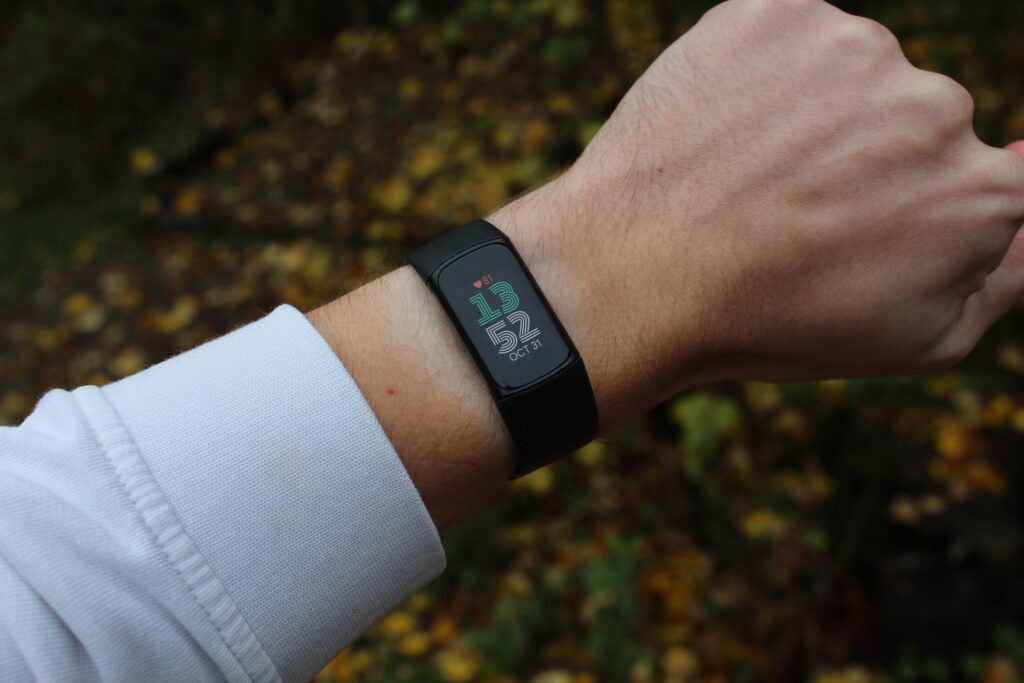
Generally speaking, the design is one I still really like, too. It’s sleek, light, and comfortable to wear around the clock. And while it definitely isn’t anything like wearing a premium watch – largely because the case material is aluminium and the bands are all silicone – it’s still, in my opinion, the top fitness tracker from a wearability perspective.
It also remains relatively unisex, though I do think that it errs on the large side for those with smaller wrists. And there are obviously more feminine designs in Fitbit’s tracker range, such as the Luxe and Inspire 3, which does perhaps limit its appeal.
With the design remaining almost identical, this means the 1.04-inch AMOLED display is also sticking around for this generation. And I have no major complaints here.
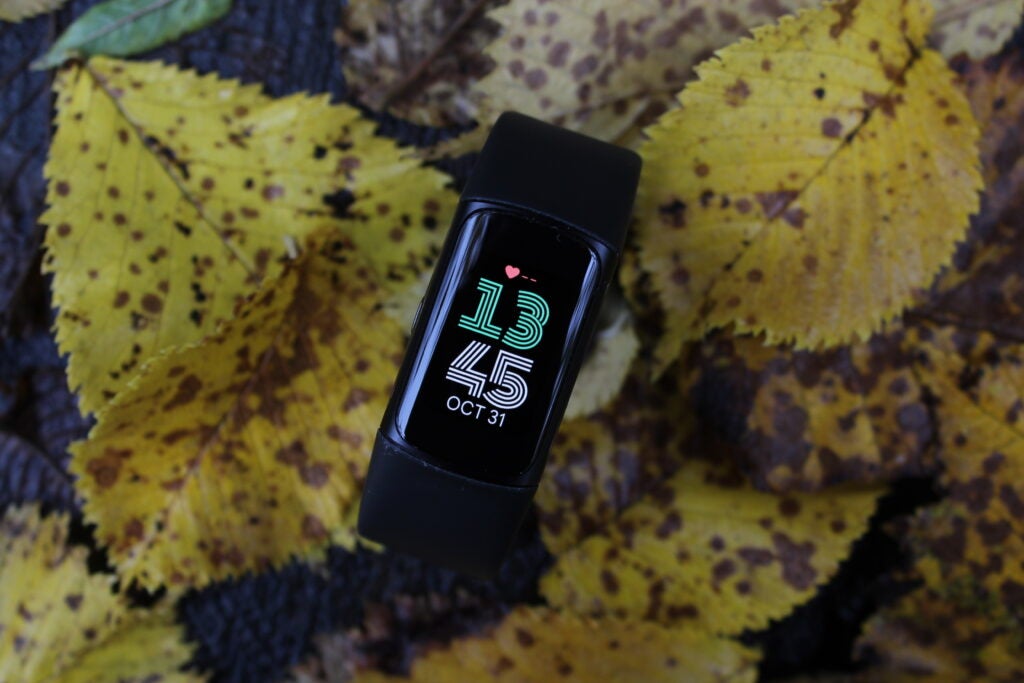
It’s still a little slow to respond to wrist raises, and the touchscreen surface you’re able to interact with is obviously very small, but it’s bright, detailed and the option is also there for it to be always on.
I expect Fitbit to make bigger strides in this area with the Charge 7, given its history of refreshing the look every two generations. And, as I’ll discuss below, rearranging the internal components might actually be essential.
Software and features
- Google services and apps debut
- No safety features or third-party apps
It’s not often that fitness trackers really have an ecosystem or compelling operating system to talk about, but it’s one of the key distinguishing factors between the Charge 6 and its rivals.
And, finally, though the might of Google has been behind Fitbit for several years, this now feels like the first tracker with its input. Google Wallet, Google Maps, and YouTube Music are all now prominently placed within the tracker’s swipeable glances, and it gives you a taste of the smartwatch-style experience without having to actually wear one (or pay for one).
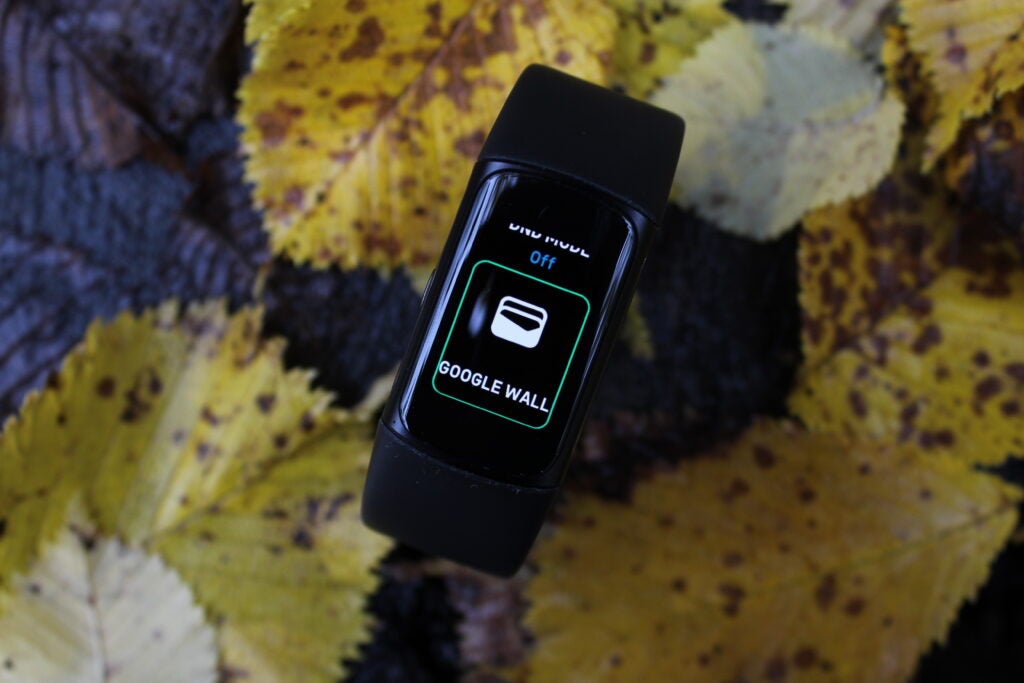
We have been granted the ability to pay on a Charge device before, of course, but this was through Fitbit Pay and not Google’s payment system, which is obviously a bit more far-reaching.
For the most part, these new toys are really handy. I personally don’t find Maps that helpful, given the small screen size, but it does at least work without issue. Once you’ve set up a route on your phone, it can be used to display turn-by-turn directions, with haptic feedback letting you know when a new instruction is fed through.
For me, Wallet is the best addition – only hampered by the fact that you’ll probably always need your phone close by – and YouTube Music, while not something I’d use outside of a free trial, does have a relatively significant number of paying listeners.
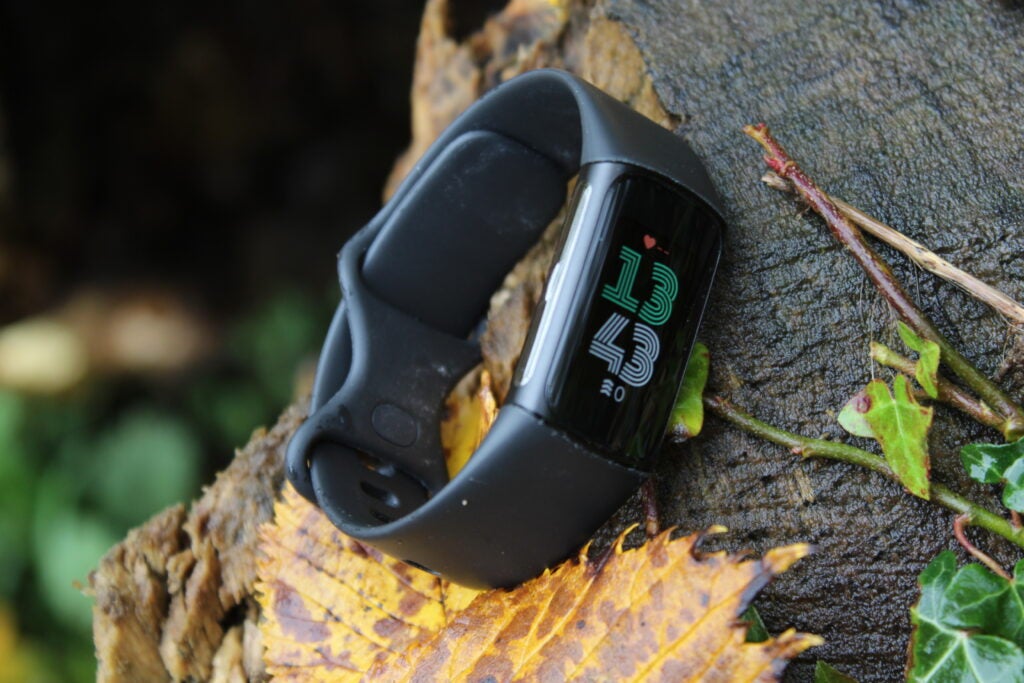
In the future, I hope these integrations can expand to third-party apps like Spotify and Komoot, but, as with most areas, even the minimum that Fitbit offers here is enough to blow the competition out of the water.
My only real gripe with the current set of features is the lack of safety smarts. After all, it’s something we’ve seen Google really emphasise with the latest Pixel Watch, with novel inclusions like Safety Check and Safety Signal.
With a cellular connection generally required for these kinds of features, though, I don’t really expect this to arrive in a Charge tracker for another few years.
Fitness and health tracking
- Standalone GPS tracking is essentially unusable
- Heart rate monitoring is hit-and-miss
- Still much better for daily tracking than sports
Little has changed on the fitness tracking front with the Charge 6 – and that’s both a positive and a negative.
The good news here is that Fitbit’s intuitive and basic view of your daily activity sits right alongside Apple’s as one of the best options for beginners. Steps and calorie burn are tracked accurately against more premium devices like my Garmin Epix Pro (Gen 2), and the more advanced features – like VO2 Max – are tucked away and dressed in more friendly titles.
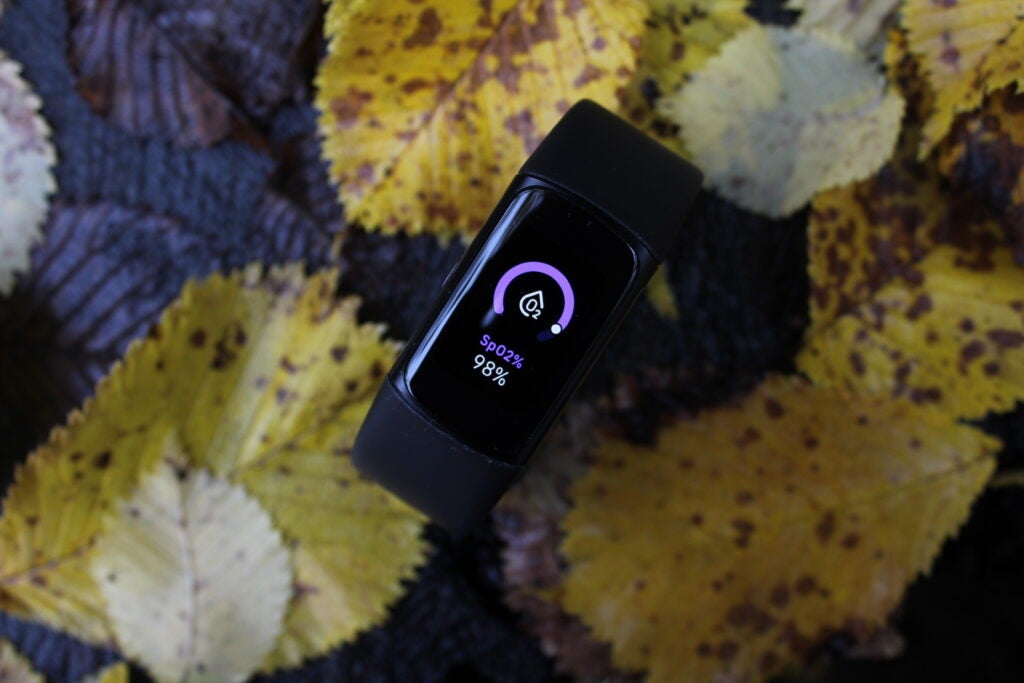
Workouts are also automatically tracked and accurately predicted, which actually isn’t always the case on all trackers, despite being a relatively basic feature. And with the Charge 6, there are also now 40 exercise modes to choose from directly on the wrist, including the likes of running, HIIT, and pool swimming (the device has a water rating of 5 ATM, though can’t be used in open water).
It’s all good on the surface, but things falter quite drastically in workout tracking. GPS tracking was something that was already a big complaint with the Charge 5, and, unfortunately, things don’t appear to have changed at all with the Charge 6.
Even a brief trip to the Fitbit forums or Reddit will see the same issues highlighted, with the consensus being that wearing the old Charge 5 very tight would improve heart rate accuracy at the cost of a GPS connection, while wearing it loose would see you regain a GPS connection but track heart rate inaccurately.
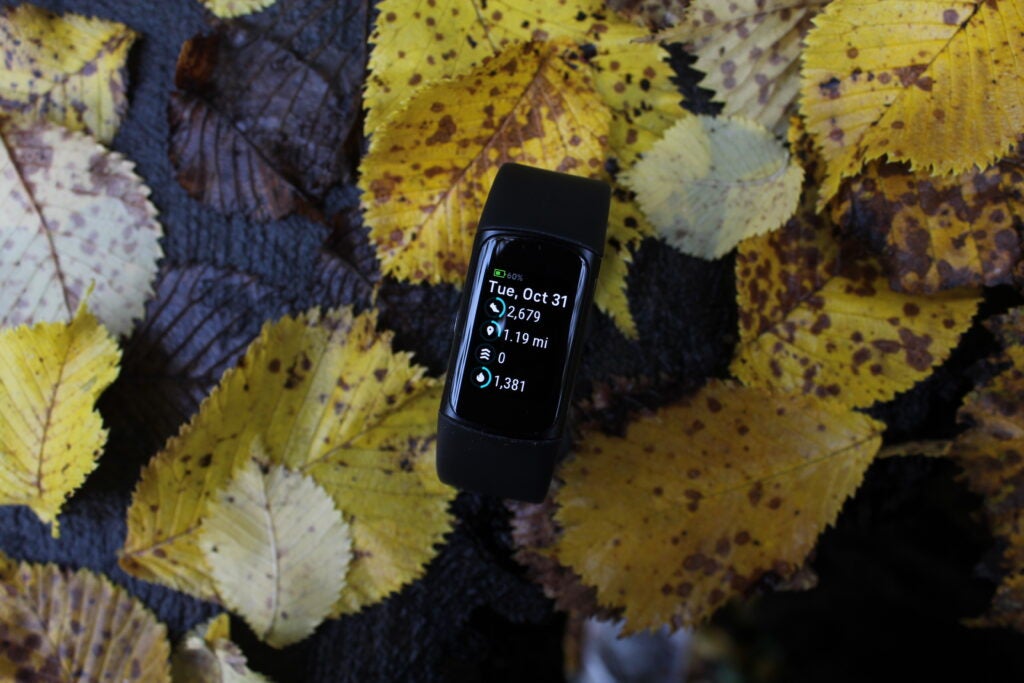
It’s the same story again from my experience running with the Charge 6. After 4-5 attempts, I’ve found that I can only gain an independent, on-device GPS connection when the device isn’t actually on my wrist.
By default, the GPS setting is what Fitbit calls ‘Dynamic’, which essentially means it’ll swap between your phone’s GPS and the device’s antenna based on signal strength.
When you change this to device-only, the problem rears its head. And, in fact, on each of my test runs with the Charge 6, it gives up after 10 minutes of tracking and bases distance on the accelerometer (and your arm movement), instead.
It’s not great – especially when this was such a known issue with a device design two years old – and ensures you’ll need to take your phone with you to gauge distance accurately.
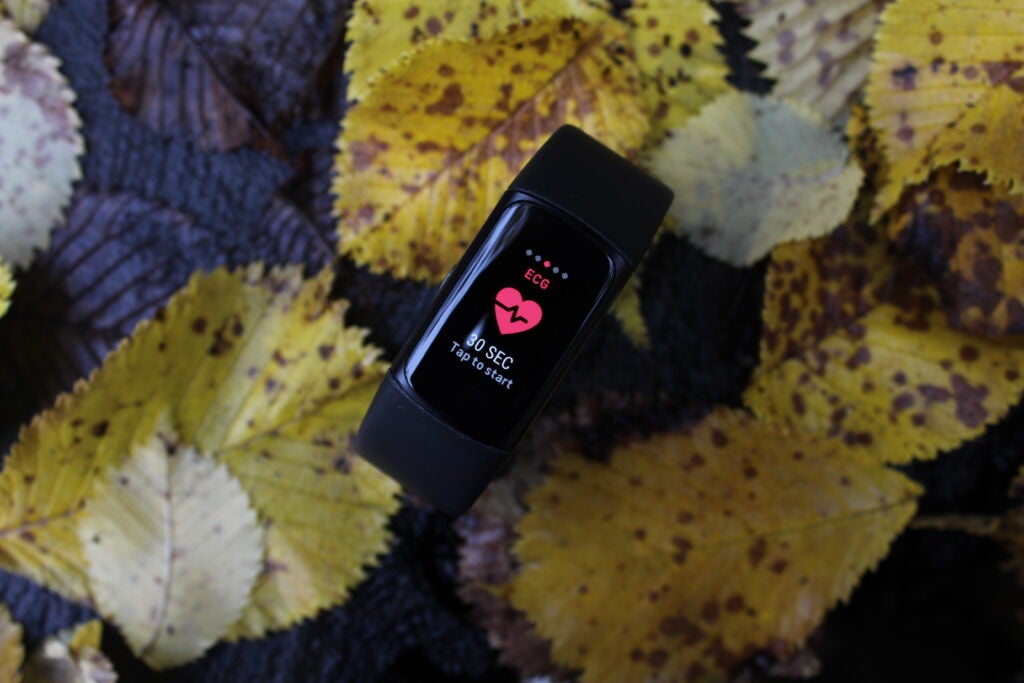
Things are slightly better with regard to heart-rate monitoring, but still not really to the extent I was imagining when Fitbit announced the integration of those new AI-based algorithms.
I found that very steady fluctuations in beats-per-minute are registered really well, which means something like a consistently paced run will be tracked accurately, but any kind of strong deviation in effort (even if I just had a session with one longer interval) will see quite a big underreporting or overreporting of average heart rate figures when compared to Garmin or a chest strap.
It’s just about good enough to get by for those only interested in casual insights into heart rate and effort, but it’s not a sensor I would put much faith in.
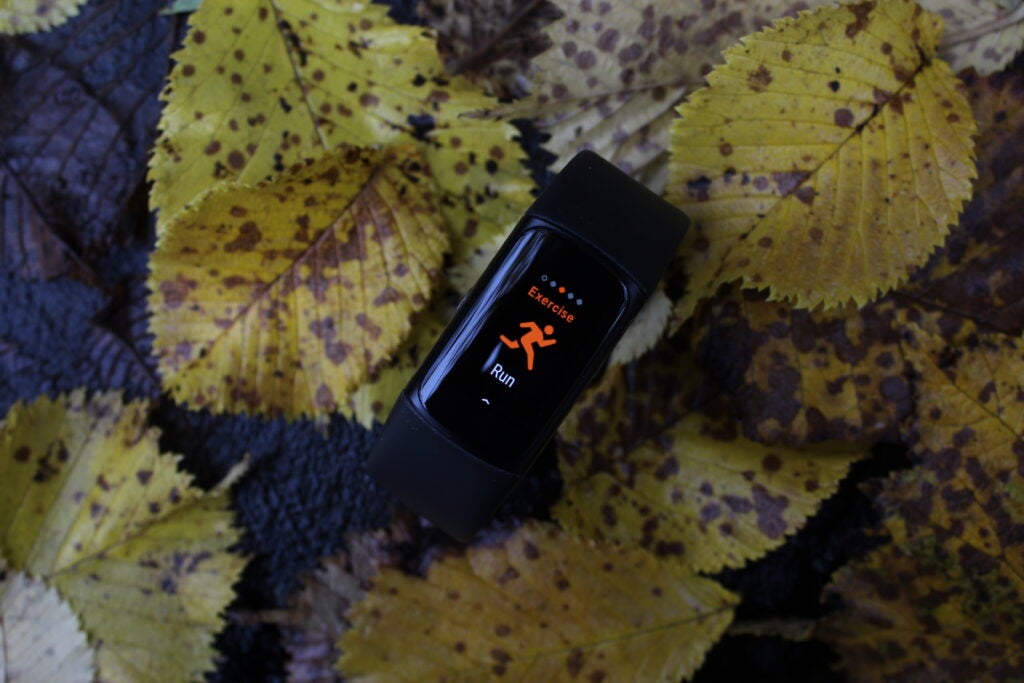
You also can’t syphon off the heart-rate monitoring to an external device like a chest strap, either, though you can now pair the Charge 6 to connected equipment (like a Peloton) via Bluetooth, if that’s your thing.
While Fitbit’s strength has never really been in sports tracking, it has always been among the very best at tracking health and sleep. And the Charge 6 is still one of the best ways to get access to some premium features in this area without owning a smartwatch.
There are no new headline additions like we saw with the electrodermal activity (EDA), electrocardiogram (ECG), or skin temperature sensors with the Charge 5, but the health package remains among the most complete on the market.
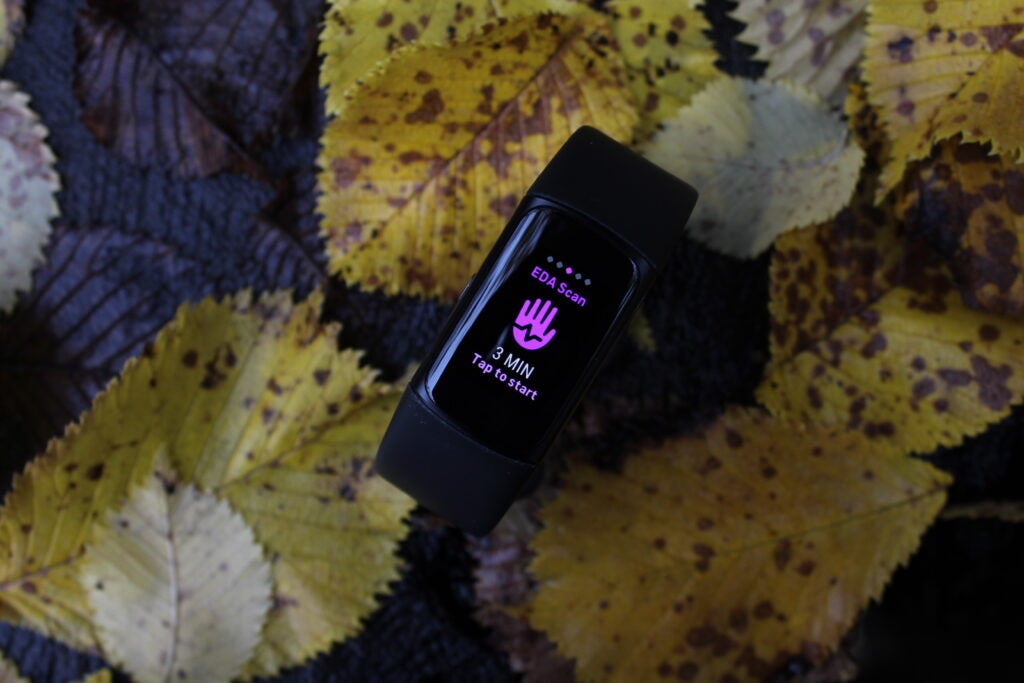
And best of all, it’s very reliable. My key metrics – breathing rate, heart rate variability (HRV), skin temperature, oxygen saturation (SpO2), and resting heart rate – were all within the ranges set out by the Whoop 4.0 and Oura Ring (Gen 3). There were no wild deviations in my time with the Charge 6, either, which can sometimes be the downfall of cheaper trackers.
I would have liked to have seen the EDA sensor upgraded to the continuous version found on the Pixel Watch 2, since this makes the stress monitoring a bit more proactive and means you don’t have to perform manual check-ins. But, again, it’s difficult to criticise Fitbit too heavily here given how far ahead of the competition it is.
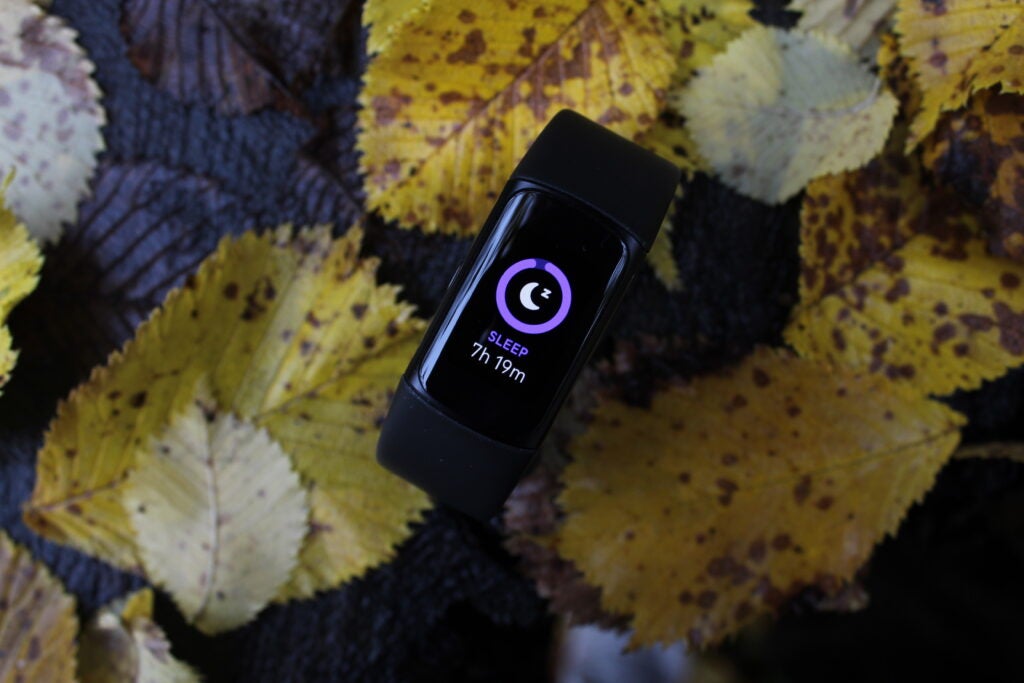
Sleep tracking is still superbly accurate, and something I think only Oura can really match up with at present.
Time in bed, fall asleep times and wake-up periods are almost always dead-on, while sleep scores – and even the relatively arbitrary sleep stages – feel much more accurate than rival offerings from the likes of Garmin, say.
The only regrettable element of Fitbit’s health and sleep tracking package is that some features are paywalled, such as Daily Readiness and Sleep Profiles. This is also true for premium non-smartwatch devices like Whoop and Oura, too, but Fitbit is still the only major brand to really do this, which is a bit of a shame.
Battery life
- 0-100% with two hours of charging
- Will last around 5-7 days in regular use
- Battery drops to 3-4 days with Always On Display
Fitbit promises up to seven days of battery life with the Charge 6, which happens to be exactly the same estimation given for the Charge 5.
This is no surprise, but, like a few other aspects, it’s slightly disappointing that Fitbit has made no progress here in the last couple of years.

Still, this estimation does check out based on my testing, with the cycle naturally reducing to around four days with the always-on display turned on.
It’s been difficult for me to gauge specific battery drain, given that the built-in GPS essentially didn’t work during the testing period, but an hour of tracking typically saw a drop-off of around 15%.
The Fitbit Charge 6 isn’t the quickest at getting back to full charge, either. Going from around 5% to a full charge took around two hours, which isn’t at all surprising given it features the same design and charger as its predecessor. Quicker charging is another feature, I believe, that Fitbit will only roll out in the next generation.
Latest deals
Should you buy it?
If you want the best Fitbit tracker
With more health and tracking features than its siblings, this is the best Fitbit device for those who don’t want a smartwatch.
If you require accurate sports tracking
Fitbit’s basic tracking may work very well, but GPS and heart rate tracking performance won’t be reliable enough for intermediate or advanced athletes.
Final Thoughts
The Fitbit Charge 6 ensures that Fitbit remains at the summit of the fitness tracker world, with minor tweaks to the design and the integration of Google services keeping it ahead of the competition.
It won’t be enough to convince Charge 5 owners to upgrade, not least because of the persisting sports tracking issues, but this is still one of the most feature-packed devices you can buy for the money. Check out our Best Fitness Tracker and Best Smartwatch guides for even more options.
How we test
We thoroughly test every fitness tracker we review. We use industry-standard testing to compare features properly and we use the watch as our main device over the review period. We’ll always tell you what we find and we never, ever, accept money to review a product.
Worn as our main tracker during the testing period
Thorough health and fitness tracking testing
FAQs
It took me around 2 hours to fully charge the Fitbit Charge 6 while testing.
According to my tests, the Fitbit Charge 6 lasts approximately 10 days on a single charge.




